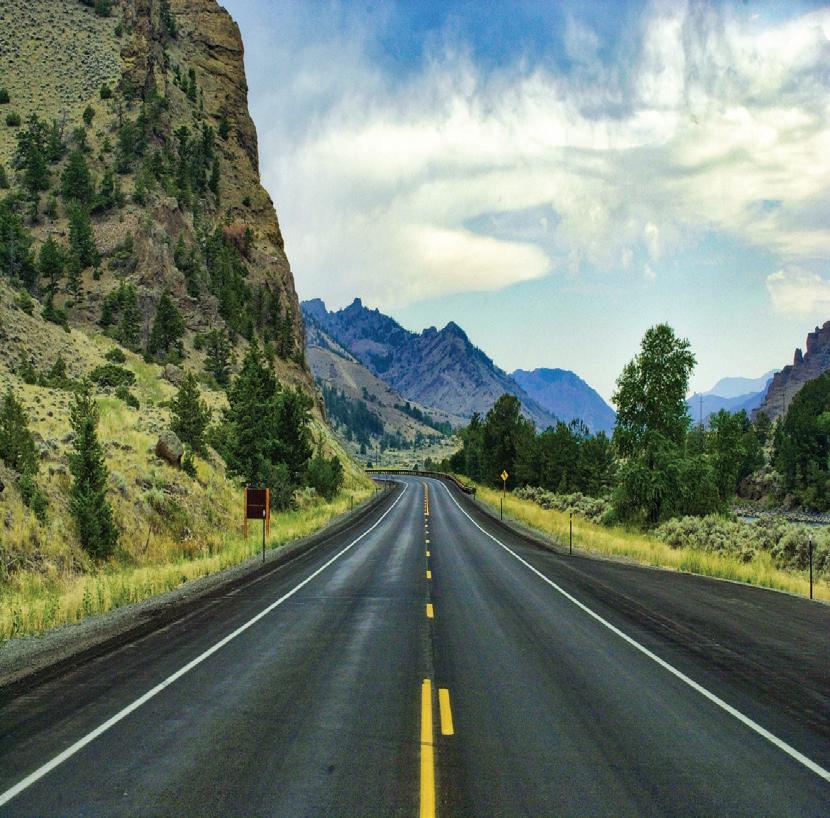Game & Fish
Walleye stocked at Greyrocks Reservoir
These walleye were slightly larger than the ones stocked in Grayrocks with the hopes that survival rates would increase by stocking bigger fish. n
Black-footed ferrets released on historic recovery site
daughter, Addison, was able to join me and experience the thrill of seeing these amazing creatures headed back to their natural habitat. This is a side of conservation that I want her, and those of her generation, to see and be part of.” Game and Fish works to maintain at least 35 individuals at the Meeteetse recovery site, a baseline set by the U.S. Fish and Wildlife Service. The new ferrets were released to bolster the A black-footed ferret. population, which saw a decline this last year due to plague. Plague is a common disease that impacts prairie dogs, the main food source for black-footed ferrets, as well as the ferrets themselves. Walker said Game and Fish will continue to carefully monitor the population. The department routinely surveys ferrets in the late summer with eyeshine surveys. During the nighttime surveys, biologists search the ground around known burrows with high-powered spotlights, looking for the green glow of a ferret’s distinctive eyeshine. When they see it, they set a trap at the ferret’s burrow. Any wildborn ferrets captured are vaccinated for distemper and plague. The department plans to release 10 ferrets in Shirley Basin near Laramie in the coming weeks, another historic ferret location. Shirley Basin was the first location in Wyoming to reintroduce black-footed ferrets following successful captive breeding. Black-footed ferrets are one of the most endangered mammals in North America. n
By Sara DiRienzo, Wyoming Game and Fish Twenty black-footed ferrets were released last week on the historic recovery site near Meeteetse. Ten male and ten female captive-born ferrets joined their kin on the ground, adding another chapter to Wyoming’s work on endangered species recovery. The small mammal that was once thought to be extinct was rediscovered in Wyoming 40 years ago. The Wyoming Game and Fish Department and U.S. Fish and Wildlife Service released the black-footed ferrets on private land. Partnerships with landowners in Wyoming have been key to the species recovery efforts. “We have phenomenal partnerships with the Lazy BV and Pitchfork ranches who are dedicated to black-footed ferrets and their success,” said Zack Walker, Game and Fish nongame supervisor. “Much of what we’ve been able to accomplish for ferrets is due to their considerable support, of which we’re grateful and appreciative.” Ashlee Lundvall, Game and Fish Commissioner from Powell who attended the release, noted it was an impactful moment for the next era of conservationists. “It was an honor to participate in the black-footed ferret release,” said Commissioner Ludvall. “I was so thankful that my
Wyoming biologists sort walleye on white boards to make sure the shipment is free of plants, invertebrates, tadpoles and fish other than walleye.
November 2021
n
Interchange 13
Photo: Wyoming Game and Fish
The small mammal that was once thought to be extinct was rediscovered in Wyoming 40 years ago.
Photo: Wyoming Game and Fish
The Laramie fisheries and Aquatic Invasive Species crews helped inspect two separate loads of walleye from the Garrison National Fish Hatchery in North Dakota before stocking them into lakes and reservoirs in southeast Wyoming. Because Wyoming hatcheries only raise trout, we receive walleye from North Dakota for Wyoming waters. The walleye are raised in outdoor ponds, so the loads must be free of plants, invertebrates, tadpoles and fish, or “anything that’s not a walleye” before stocking. So biologists sort through the shipment by running the fish over white boards before stocking them. The white boards make it easy to see anything that doesn’t belong. “Garrison National Fish Hatchery does a really good job sending us clean fish, but we still need to go through them to ensure all is good,” said Laramie Region Fisheries Supervisor Bobby Compton. Once cleared, 400,000 fingerling walleye were stocked into Grayrocks Reservoir in June. In August, Hawk Springs Reservoir and Wheatland Reservoir No. 1 each received 40,000 walleye.










